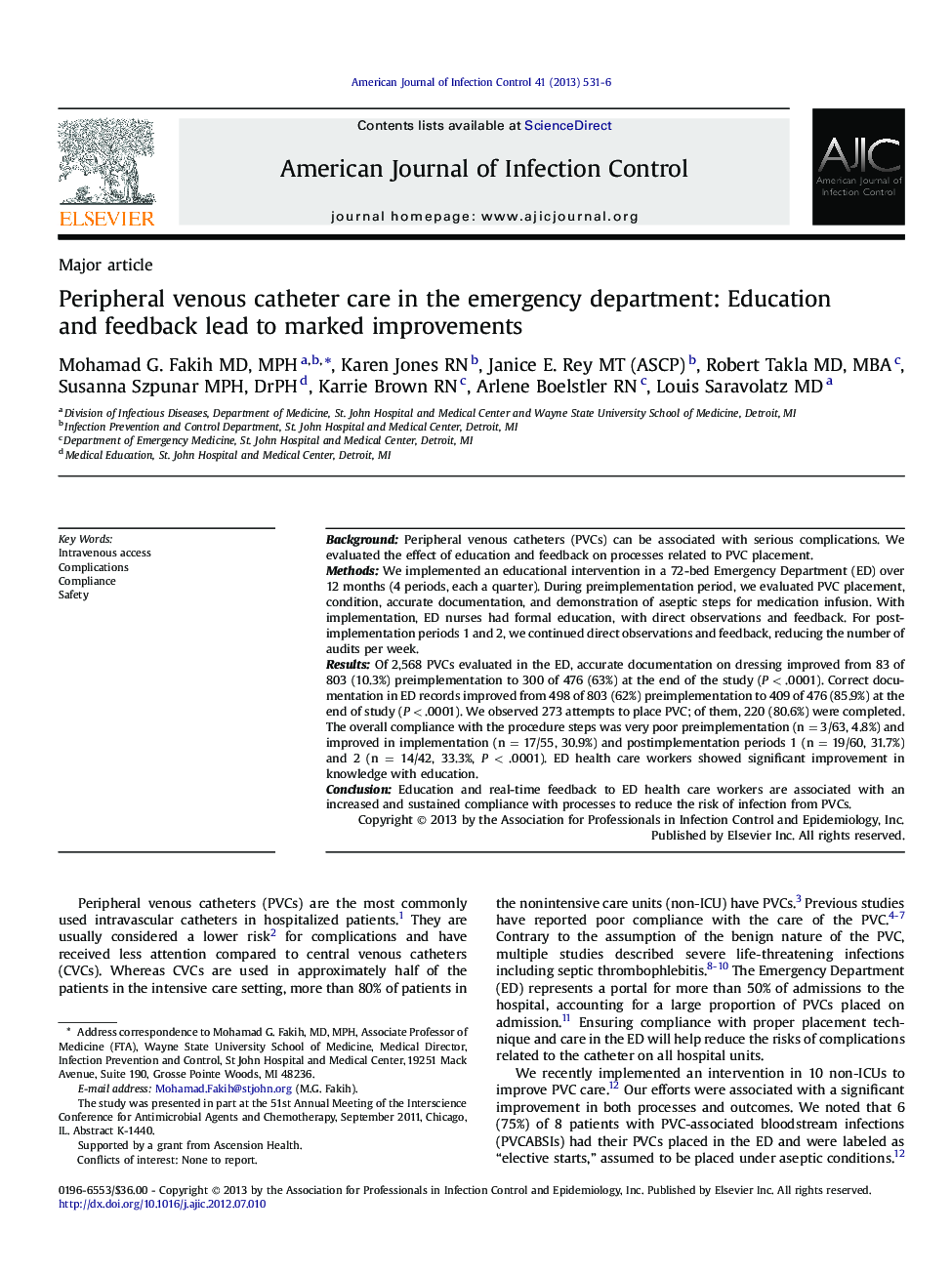| Article ID | Journal | Published Year | Pages | File Type |
|---|---|---|---|---|
| 2639831 | American Journal of Infection Control | 2013 | 6 Pages |
BackgroundPeripheral venous catheters (PVCs) can be associated with serious complications. We evaluated the effect of education and feedback on processes related to PVC placement.MethodsWe implemented an educational intervention in a 72-bed Emergency Department (ED) over 12 months (4 periods, each a quarter). During preimplementation period, we evaluated PVC placement, condition, accurate documentation, and demonstration of aseptic steps for medication infusion. With implementation, ED nurses had formal education, with direct observations and feedback. For postimplementation periods 1 and 2, we continued direct observations and feedback, reducing the number of audits per week.ResultsOf 2,568 PVCs evaluated in the ED, accurate documentation on dressing improved from 83 of 803 (10.3%) preimplementation to 300 of 476 (63%) at the end of the study (P < .0001). Correct documentation in ED records improved from 498 of 803 (62%) preimplementation to 409 of 476 (85.9%) at the end of study (P < .0001). We observed 273 attempts to place PVC; of them, 220 (80.6%) were completed. The overall compliance with the procedure steps was very poor preimplementation (n = 3/63, 4.8%) and improved in implementation (n = 17/55, 30.9%) and postimplementation periods 1 (n = 19/60, 31.7%) and 2 (n = 14/42, 33.3%, P < .0001). ED health care workers showed significant improvement in knowledge with education.ConclusionEducation and real-time feedback to ED health care workers are associated with an increased and sustained compliance with processes to reduce the risk of infection from PVCs.
